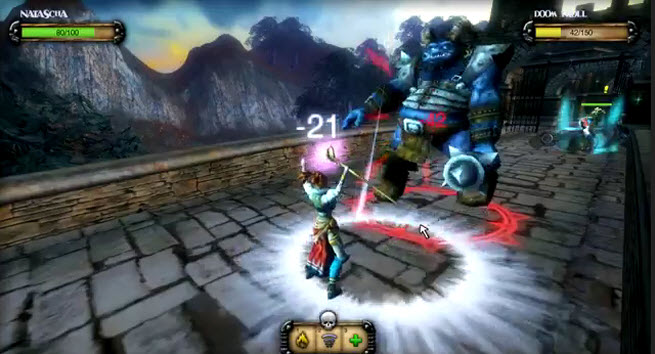
Australian start-up Scalify has raised $2 million in venture funding so that it can create networking technology that enables the fast and efficient creation of online games and virtual worlds.
Australian venture firm Starfish Ventures led the investment in Melbourne, Australia-based Scalify, which has created Badumna, a technology that uses a peer-to-peer user network to deliver functions normally handled by large server farms. The result is games that look better, perform better, and cost less to operate. That’s important since driving down online costs is key to making game companies more profitable.
[aditude-amp id="flyingcarpet" targeting='{"env":"staging","page_type":"article","post_id":426557,"post_type":"story","post_chan":"none","tags":null,"ai":false,"category":"none","all_categories":"business,games,","session":"D"}']Scalify says that rapid growth can cause a lot infrastructure headaches for game publishers. Traditional client-server online games rely on centralized communication. That slows gameplay, is difficult to scale quickly, and reduces the number of players who can be online at any given time.
Badumna allows traffic to communicate via peer-to-peer in a decentralized network. The company argues that this approach enables multiplayer apps that were not possible before. It does so by forming a secondary network of trusted nodes that are used for services such as authentication, third-party arbitration, and others tasks. These tasks are executed in the peer-to-peer network, and so, that network offloads work from the servers.
AI Weekly
The must-read newsletter for AI and Big Data industry written by Khari Johnson, Kyle Wiggers, and Seth Colaner.
Included with VentureBeat Insider and VentureBeat VIP memberships.
“As each player joins the game, they automatically contribute additional capacity to the network, making the approach inherently more scalable than any client-server approach,” Steve Telburn, chief executive of Scalify, said in an email. “This is obviously important because publishers do not know if their games will be a success or not, so they need to plan their infrastructure based on the ‘best case’ scenario.”
That’s true even if the infrastructure is outsourced as they still need to secure dedicated servers. Testing shows improvements to latency, Telburn said. “There is only one hop peer-to-peer rather than two hops via a server.”
He contends the approach can reduce server and bandwidth costs by up to 75 percent, depending on the design of the game. Those costs are usualy the third-highest expense for an online game — after development and advertising. In addition, the game design can be better, Telburn said. Designers can create un-sharded worlds with lots of synchronous (simultaneous) action.
Past peer-to-peer gaming attempts haven’t succeeded well on a large scale. But Telburn said Badumna is different as it was created after a huge four-year research effort. His team has addressed things such as dealing with cheaters through a “distributed validation” technology.
The first version of Badumna debuted last year, and it is now being used to power games in the U.S., Europe, and Asia. The new funds will be used to expand the company’s sales and marketing capability and increase the range of game development platforms supported.
Starfish investment director Anthony Glenning, who will join Scalify’s board, said, “The online gaming market is large and is growing quickly, but is hindered by the traditional client-server model which is expensive and limits scalability. We recognized Scalify’s unique solution for peer-to-peer games, especially in terms of scalability and reducing traffic to the server.”
[aditude-amp id="medium1" targeting='{"env":"staging","page_type":"article","post_id":426557,"post_type":"story","post_chan":"none","tags":null,"ai":false,"category":"none","all_categories":"business,games,","session":"D"}']
Telburn said, “We always get a great reaction to our product from customers, so we’ve always been very keen to expand its reach. We’re thrilled that this investment will now enable us to show Badumna’s full potential.”
The core technology came from NICTA, Australia’s Information and Communications Technology Research Centre of Excellence. That entity worked on the technology for four years as a research project. Scalify was formed in 2010, and it has four employees. Rivals include networking middleware companies such as Exit Games, but their solutions are based on client-server designs.
Scalify has also gotten a small grant from the Australian government. Game trials are now under way with major publishers. In addition to Telburn, another founder is Santosh Kulkarni, chief technology officer.
VentureBeat's mission is to be a digital town square for technical decision-makers to gain knowledge about transformative enterprise technology and transact. Learn More
